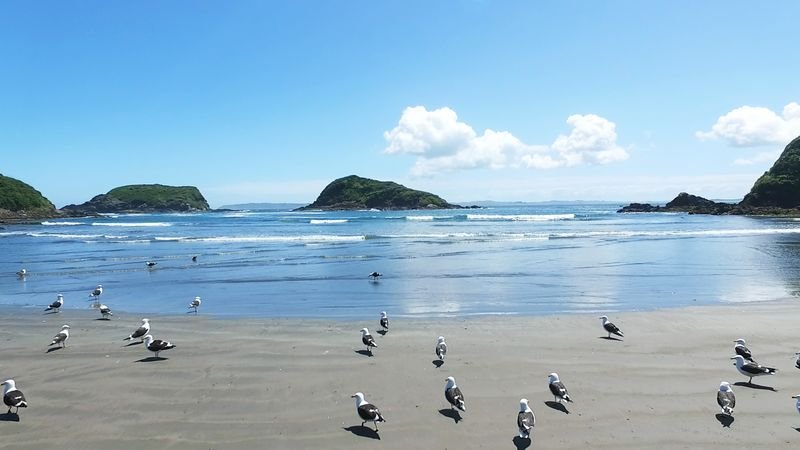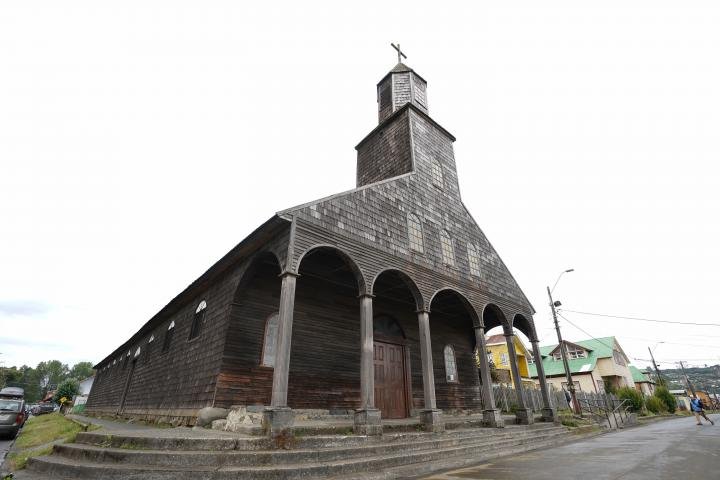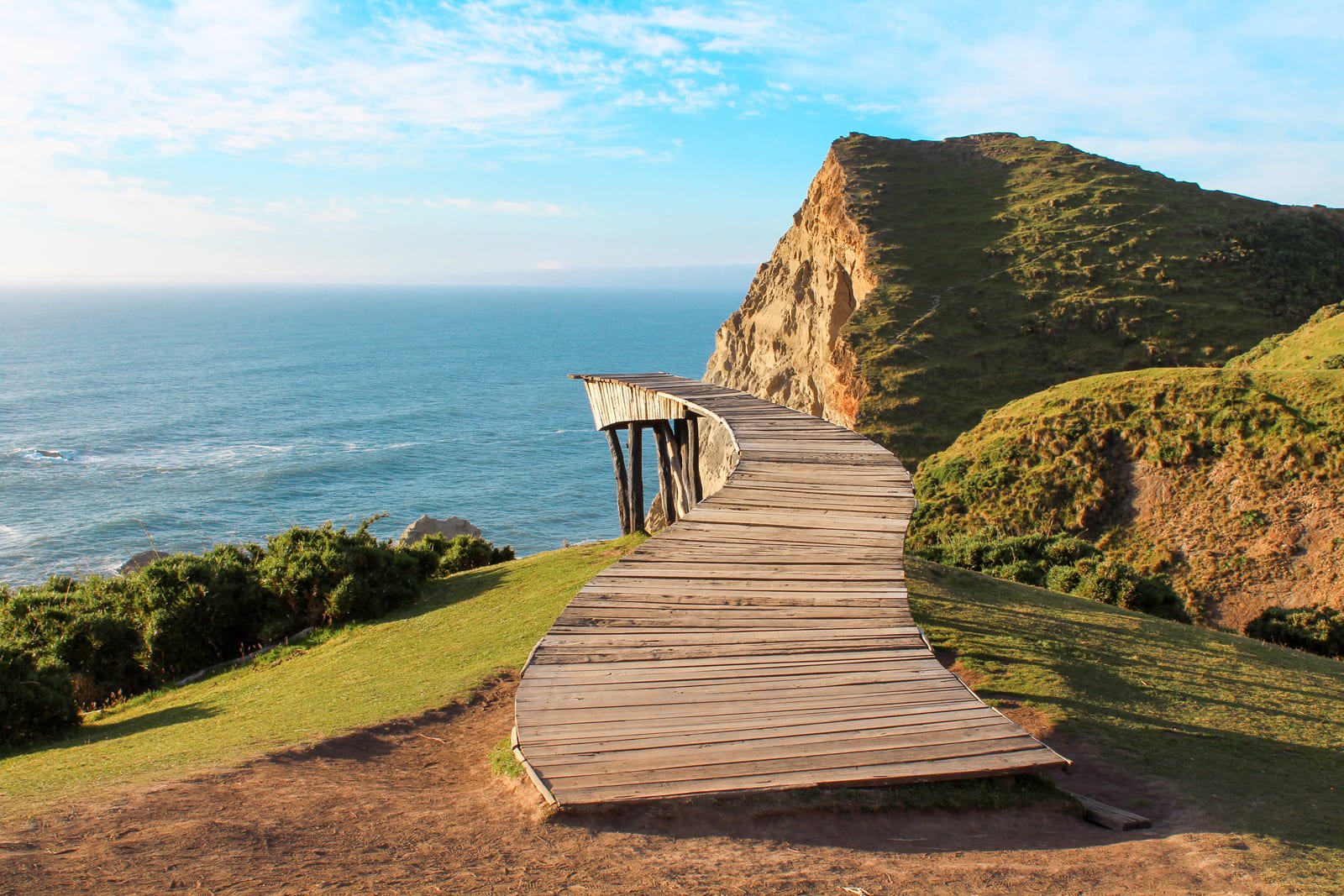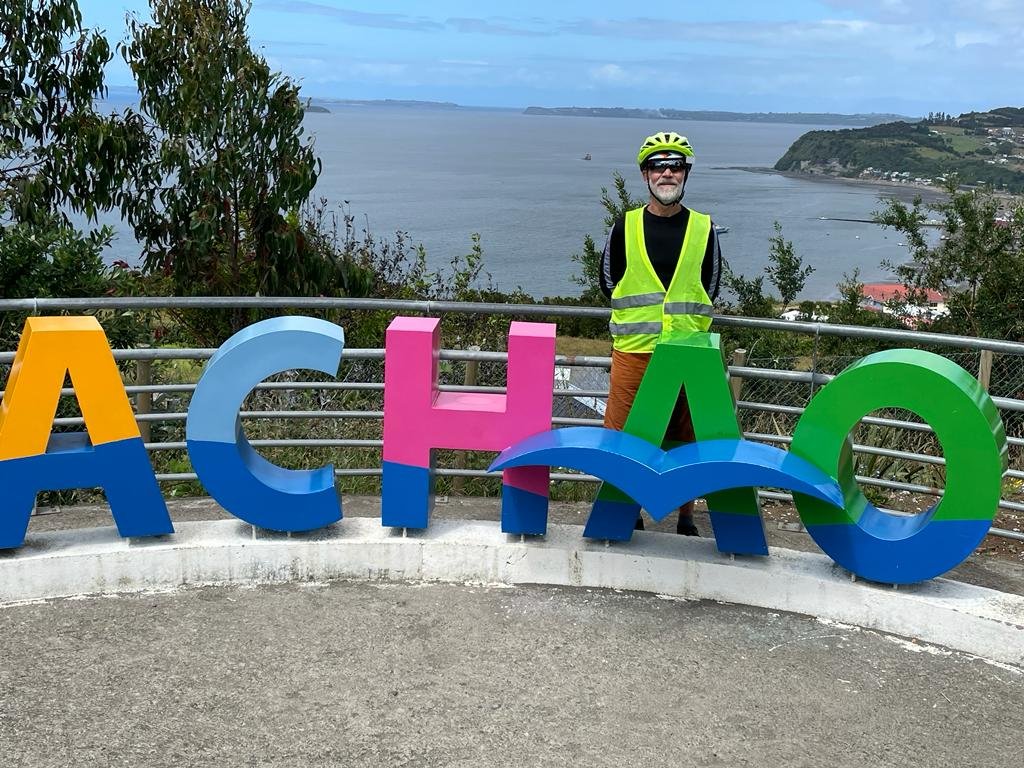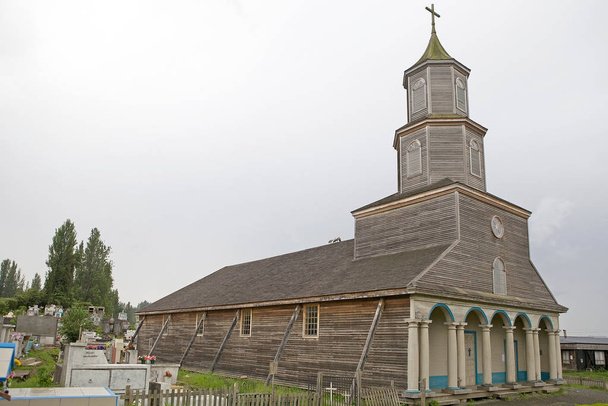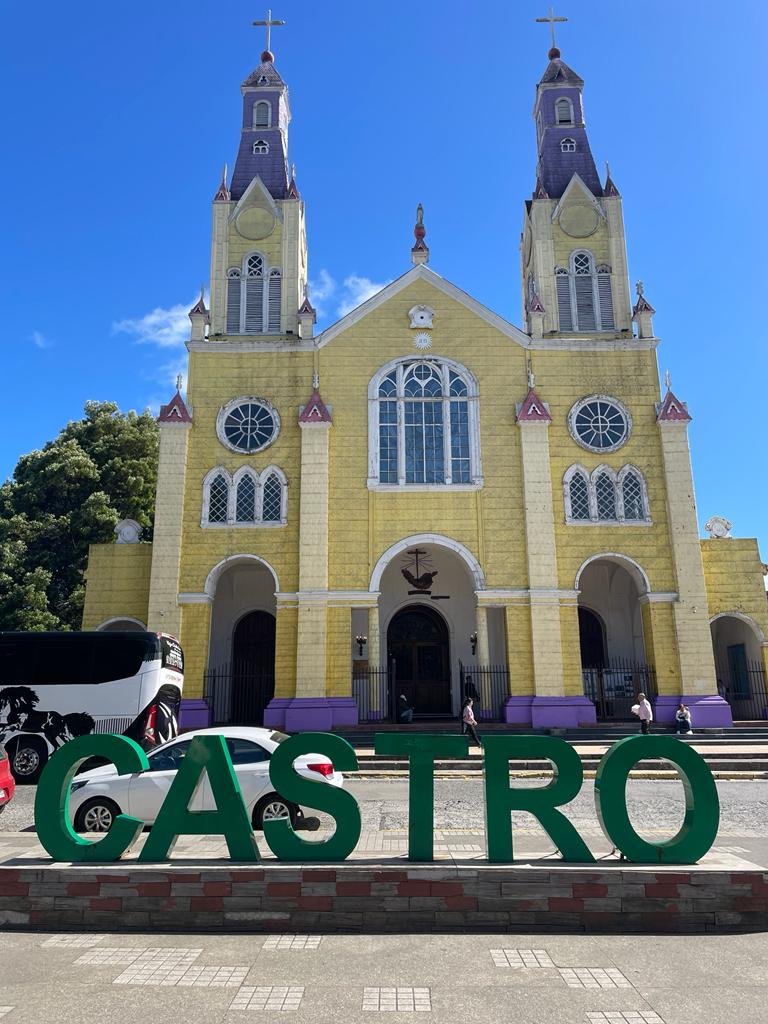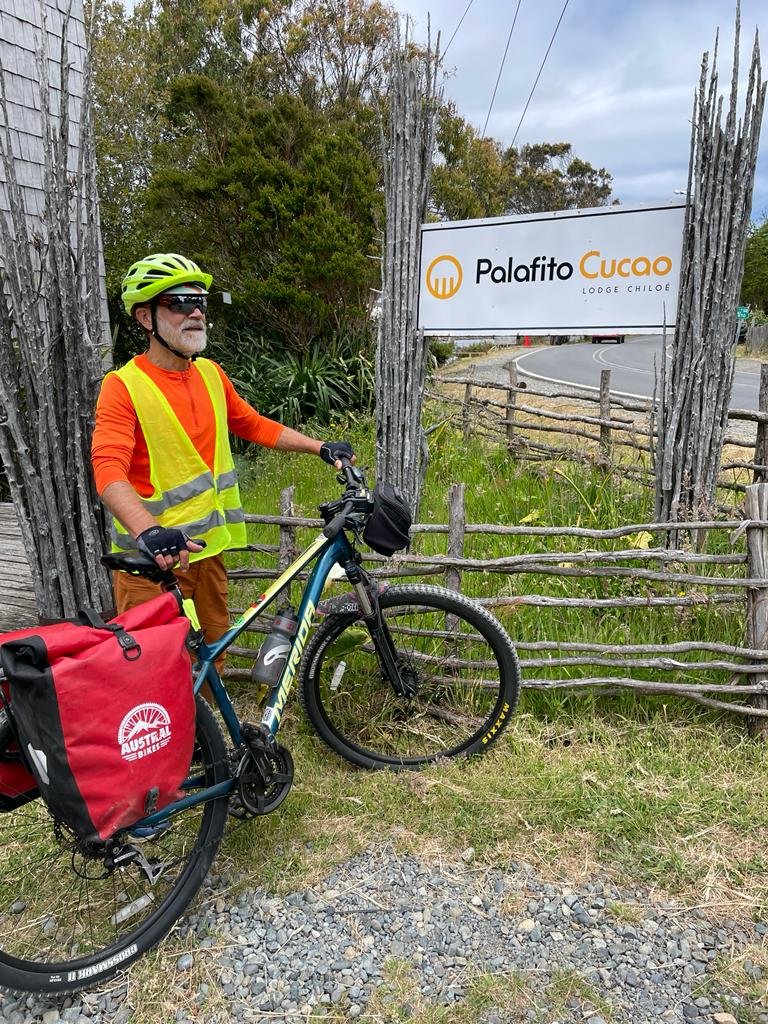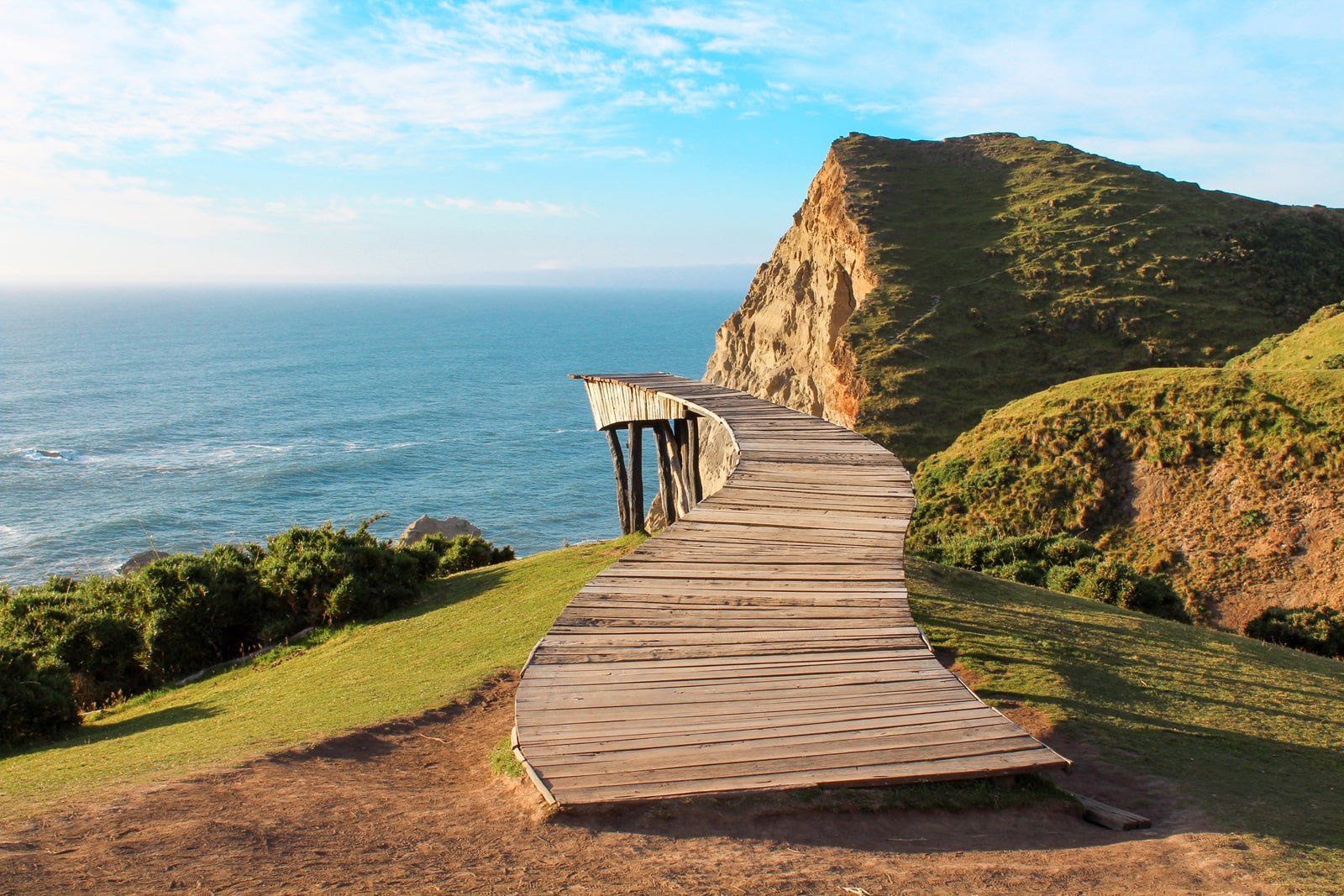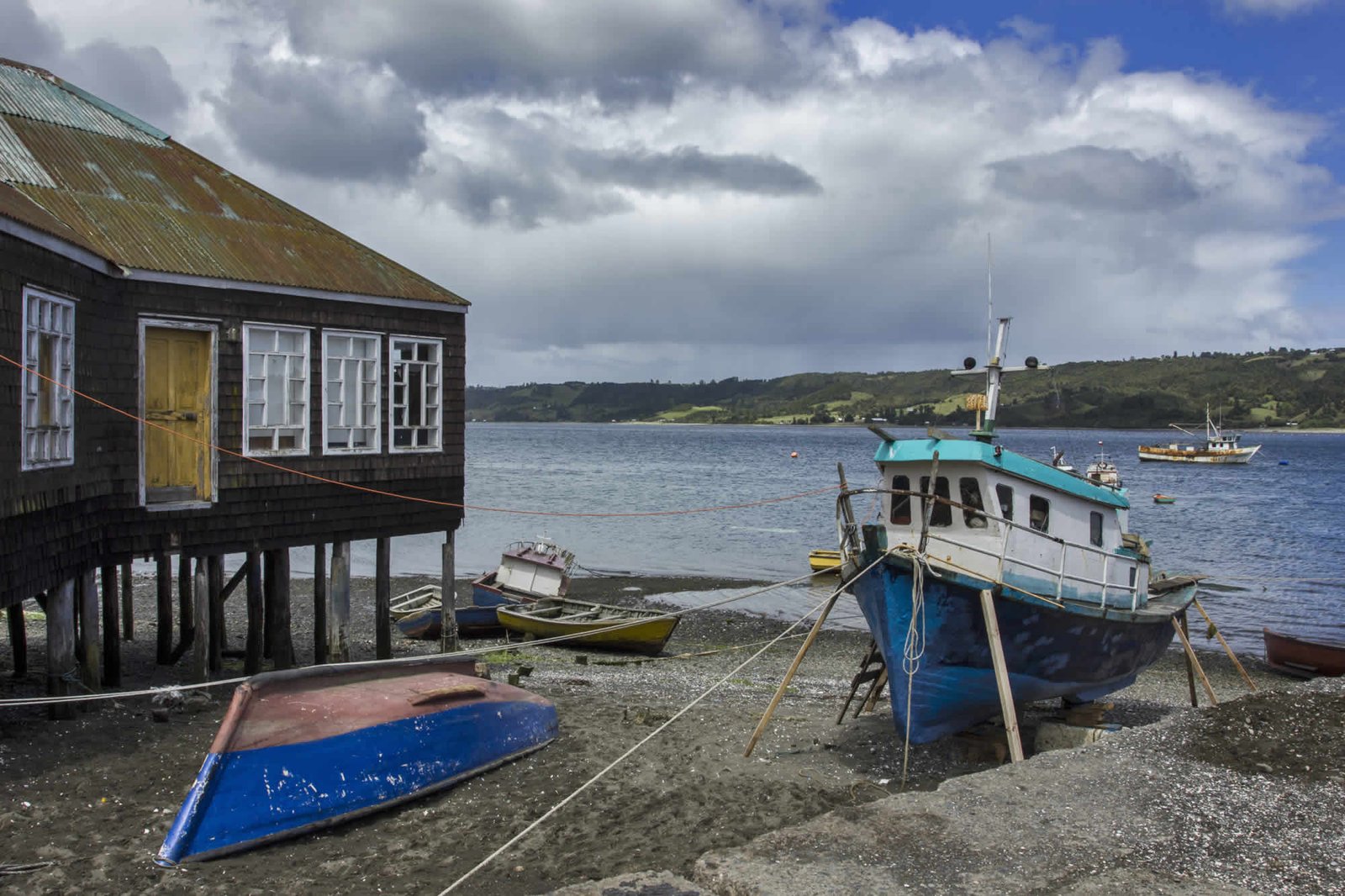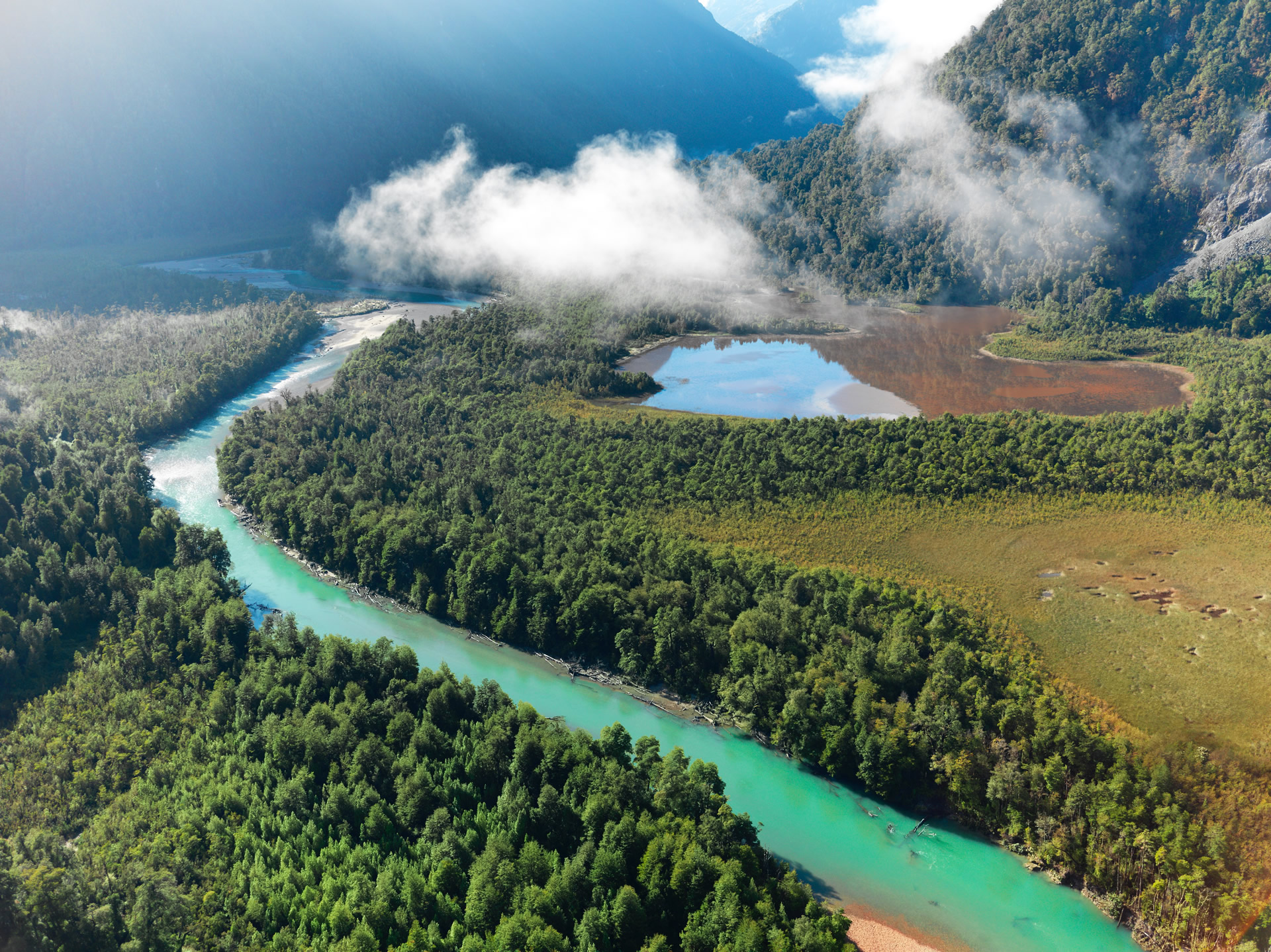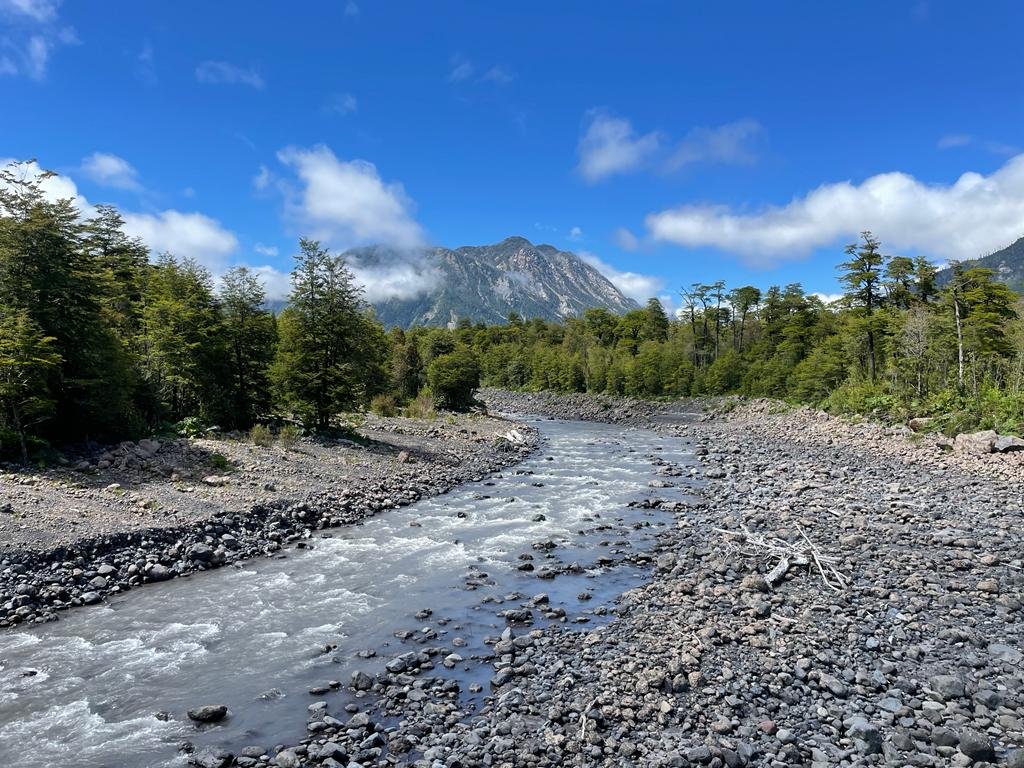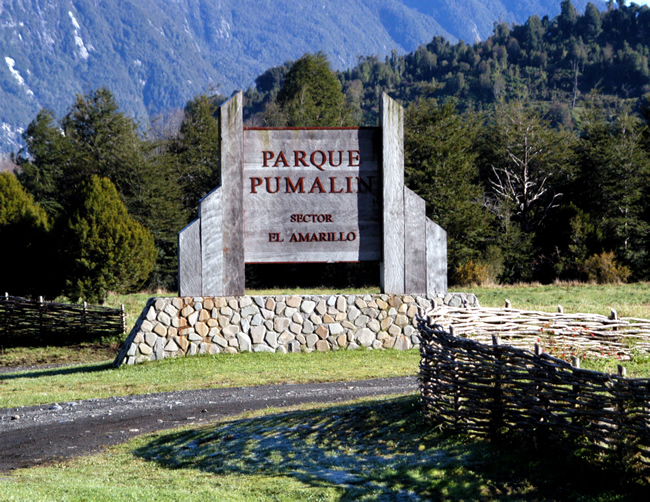Chiloé and Pumalín Park
Cycle between Chiloé and Pumalín Douglas Tompkins National Park Loop . 12 Days.
Chiloé – Pumalín Park loop 12 days
Pumalín Douglas Tompkins National Park:
– Chile’s best maintained National Park.
– Hiking options for all abilities, from short walks to challenging volcano ascents.
-Legends, folklore, culinary tradition, penguins, unique architecture & wild forests.
Arrival to Puerto Varas
LODGING - Puerto Varas
- Dinner
Transfer from Puerto Varas – Pargua. Cycle from Pargua - Ancud 37,2 km
PICK UP BIKES
- Departure: AUSTRAL BIKES STORE Puerto Varas.
- Transfer with bikes from Puerto Varas to Pargua
- FERRY CHACAO CHANNEL - Tickets not included on the budget.
- LODGING Hotel in Ancud.
- Dinner at Hotel in Ancud.
**** YOU NEED TO BUY LUNCH IN ROUTE, TRY THE "TYPICAL EMPANADAS"
Ancud - Puñihuil - 26 km. Tour to "Pinguineras" Puñihuil Penguin Colony
- Departure Hotel in Ancud (Breakfast included at lodging)
- VISIT TO LAS PINGUINERAS - Puñihuil Penguin Colony
- LODGING at Lodge or cabin in Puñihuil
- Dinner at lodging in Puñihuil
**** YOU CAN BUY LUNCH IN ROUTE
Puñihuil - Quemchi - 71 km
- Departure Lodging in Puñihuil (Breakfast included at lodging).
- LODGING at Quemchi
- Dinner at lodging in Quemchi
**** YOU CAN BUY LUNCH IN ROUTE
Quemchi - Dalcahue - 58 km
- Departure Quemchi: (Breakfast included at lodging)
- LODGING at Hotel in Dalcahue
- Dinner at Hotel in Dalcahue
**** YOU CAN BUY LUNCH IN ROUTE
Dalcahue - Achao - Dalcahue - Castro - 79 km
- Departure Dalcahue: (Breakfast included at lodging)
- LODGING at Hotel in Castro
- Dinner at Hotel in Castro
**** YOU CAN BUY LUNCH IN ROUTE
Castro - Cucao 52,7 km
While in Castro:
- VISIT THE FAMOUS "PALAFITOS"
- Enjoy the "Feria Artesanal" Crafts Market
- Breakfast included at lodging in Castro.
- LODGING at Hostel in Cucao.
- Dinner at Hostel in Cucao.
Cucao - Quellón W-861- 61,3 km
- Breakfast included at lodging in Cucao.
- LODGING at Hostel in Quellón
- Dinner at Hostel in Quellón
W 861 - Quellón 32 km cycling then- Ferry to Chaiten with NAVIERA AUSTRAL
- Departure Quellón: (Breakfast included at lodging)
- FERRY FROM QUELLÓN TO CHAITEN NOT INCLUDED ON THIS BUDGET- NAVIERA AUSTRAL.
- Be prepared with some sandwiches for lunch.
- LODGING at Hostel in Chaitén
- Dinner at Hostel in Chaitén
Chaitén - Pumalin Park 24,4 km
- Departure Chaitén:(Breakfast included at lodging).
- ENJOY PUMALÍN PARK- you can do trekking, kayaking, thermal springs.
- LODGING at cabin in Pumalín Park
**** YOU NEED TO BUY LUNCH AND DINNER IN ROUTE
ENJOY PUMALÍN NATIONAL PARK
- ENJOY PUMALIN NATIONAL PARK
- Hike to the crater of a smouldering volcano.
- Visit the sparkling waterfalls of Cascadas Escondidas.
- Hike through lush, verdant rainforest and be mesmerised by cascading waterfalls.
- Combine breath-taking scenery, sea lion colonies and waterfalls plunging directly into the sea by kayaking through Pumalín Norte.
- Cycle to Chaiten.
- LODGING at Hostel in Chaitén
- Dinner at Hostel in Chaitén
- You can have lunch at Café Caleta Gonzalo or be prepared with some sandwiches, snacks and water.
Chaitén - Puerto Montt - FERRY NAVIERA AUSTRAL - Puerto Montt - Puerto Varas 21,7 km cycling.
- Departure Chaiten (Breakfast included at lodging)
- FERRY FROM CHAITEN TO PUERTO MONTT NOT INCLUDED ON THIS BUDGET.
- We will pick you in Puerto Montt at the arrival of the ferry (with the bikes) and drive back to Puerto Varas.
- LODGING - Puerto Varas (Breakfast included at lodging)
- Dinner in Puerto Varas
DROPOFF BIKES we will return the bikes.
- Back home
2.300.- USD Solo rider/single cyclist
2.000.- USD EACH | Minimum 2 people
1.900.-USD EACH | 3 – 4 people
self guided tour
included
LODGING 12 days: B&B, Cabin, Hostel – Twin or Double Bed Rooms.
Breakfast: 12 days included
Dinner: 12 days Included at B&B and hostel.
Transfer with bikes from Puerto Varas to Pargua to take the first ferry.
Bike rental: 12 days included.
not included
– Airport transfer to Puerto Varas (arrival from Santiago)
– Airport transfer (return to Santiago).
– Ferry Pargua – Chacao
– Ferry Quellón – Chaitén
– Ferry Chaiten – Puerto Montt
– Entrance ticket to Las Pinguineras
– Lunch each day.
– Guide
make your reservation








ITINERARY
DAY 1
The nearest Airport is El Tepual (PMC) in Puerto Montt. All domestic flights are operated by three local airline companies: Latam, Sky Airlines and JetSmart.
DAY 2: Ancud
The route to Ancud is not very demanding, you will cycle 31 kilometers of paved route, be cautios on the route as youll find several sections without any berm and it´s often bumpy. Pay attention to the trucks, buses and vehicles on the route. The landscape is very beautiful, with little ascent, rivers and the sea in sight. In Ancud, you feel the sea breeze.
The town squareof Ancud is very beautiful, visit the market and craft fair, the cathedral and the museum.
DAY 3: Penguin colonies of Puñihuil
This is one of the most beautiful routes in Chiloé, you will reach a huge beach with islets in the background that provide a unique view.
If you need cash, there is an eco-hostel 1 km far from the beach with a minimarket and nearby bank, it´s advisable to have cash. You need to do the tour to visit the islets and penguin colonies of Puñihuil, that´s about 40 min on a small boat that allows you to see the penguins and appreciate the beautiful islets. This is the only place in the world where Humboldt and Magellanic penguins nest side by side. The colony is found on three islets around around 27 kilometres southwest of the Gulf of Ancud.
DAY 4: Quemchi
Quemchi offers many attractions and places to visit. Here are the most important ones: Casa Museo Francisco Coloane, Capilla Aucar, Iglesia Quemchi.
DAY 5: Dalcahue
The chilota cuisine combines the Mapuche cuisine with Spanish cuisine and seafood, although potatoes and meats are also essential to prepare classic dishes such as curanto. In Dalcahue’s kitchens, you can try this dish, as well as a chicken casserole, various native fish and potatoes that are characteristic of Chiloe.
The town is the most important craftwork producer and industrial developer in the region. It has a great huilliche legacy. It has a colorful market, less than 20 kilometers from Castro, and beautiful architecture, its Church was built in the XVIII century and it´s Patrimony of the Humanity.
DAY 6: Achao
Achao has a shallow sandy beach and is surrounded by hills. Opposite the town are the islands of Llingua and Linlín. The surrounding hills have a number of lookouts, such as the Alto de la Paloma lookout.
The architecture in Achao is known for the wide variety of larch tiling used on the roofs of its houses.
DAY 7: Castro
Castro: The famous palafitos of Castro are probably the most well-known postcard of Chiloé. They are a group of wooden houses and roof of larch, which are supported on thick piles, located on a pier.
They have two fronts, one towards the street, with which it communicates through a bridge, and the other towards the canal, which consists of an upper terrace generally used as a patio and a lower level that, depending on the tide, is used for typical fishing jobs. In this sector the boats that wait to go out to make their journey in search of shellfish and fish are moored.
The first of these houses were built for trade during the logging boom in the late 19th century and since, have been quite the attraction for tourists.
MUSTS ON CHILOÉ:
Enjoy a curanto:
The traditional dish of Chiloé, curanto, has become widely known and common all over the south of Chile and Argentina – famous chef Francis Mallman has also been known to cook them. Seafood, meat and potatoes are placed on hot coals in the heart of the earth, and then covered with large leaves and left to steam.
Churches: Religion is an important part of the history of Chiloé and is reflected mainly in its recognized churches. In the archipelago, there are approximately 70 Chiloe churches, 16 of which have been named World Heritage Sites. Built by Spanish Jesuits in 1567, some of the most striking are the churches of Vilipulli, Nercón, and Nuestra Señora del Rosario.
Chiloé National Park: One of its two great parks is the Chiloé, which includes trails with spectacular views of the sea and huge larches and tepas.
Craft markets: An admirable characteristic of the Chilotes, is that throughout their history, they have always known how to take advantage of what the abundant nature of the island has given them. The shells of the shellfish that they used for cooking, the pieces of wood left over from the construction of a house and even the leather left over from a roast to the stick, are used to make colorful crafts. Natural wool and natural pigments are the most popular, but they also include basketry, stonework, and wood.
DAY 8: Cucao
Cucao is a small town of about 500 inhabitants on the Isla Grande de Chiloé. It is the only town on the western coast of the island and is located about 50 km from Castro and 33 km from Chonchi. It is a mysterious place surrounded by legends. You will find nature in its purest state; In addition to the sea, the strong waves of the Pacific and its extensive beaches, it is surrounded by forests, green meadows and large lakes.
Located in Punta Pirulil, it is a sculpture that pays tribute to the Chilota tradition and its legends. One of them is related to this precise place, and it is said that when a person dies, their soul travels there, to Punta Pirulil, where the Tempilkawe rafter awaits them to take them to the afterlife in his white foam boat. The legend could be perfectly true, since the energy that this place gives off is unique. The pier is located on top of a cliff, surrounded by a green meadow and fantastic views of the Pacific Ocean, whose waves break against the rocks creating that white foam that could have easily form the rafter’s boat.
Day 9: Quellón
Parque Tantauco, the flora and fauna of Chile attract many nature lovers to our country, the Tantauco park is definitely a must, not only of Chiloé but of all of Chile.
Day 10: Chaiten is all about nature, outdoor activities, and remoteness.
Chaiten hides a terrifying story that happened not that long ago. After 8000 years of being dormant, the Chaiten volcano erupted in 2008. The town with its 4000 residents was evacuated, and the ash plume rose up to 30 kilometers in the next days.
Then the rain arrived, lahars flooded the town and took everything with it. The river couldn’t withstand the extreme strain of mud on its banks and changed its course as a result.
The Chaiten volcano eruption was pretty devastating to this settlement, especially its southern sector, and the results are still visible today. The government talked about the town’s relocation and rebuilding in a different location, but the local people refused to move and stayed in the same place they’ve been living their entire lives. The rebuild was slow, and it took almost three years before even basic services such as drinking water or electricity were renewed.
DAYS 10 and 11:
Pumalín Douglas Tompkins National Park
No guide or special permits are required to visit the park. The hiking trails in Pumalin Park are well-marked and easy to follow. You don’t need GPS for finding the routes. The entrance to the park is free.
Pumalín’s spectacular landscape is pinched in between the Chilean fjords and the Andes, and its temperate rainforest is a biodiversity hotspot. The park, which is bisected by the Carretera Austral, contains around a quarter of Chile’s ancient alerce trees, which can live for millennia. That number continues to grow thanks to extensive reforestation. Local communities have remained central to developing the park.
The park is split into a north (norte) and south (sur) sectors. The south is the main area of hiking, while the north has no roads and can only be accessed by boat or on a sea kayak trip.
Lush temperate rainforest, waterfalls, snow-capped mountains, smoking volcanoes, glaciers, fjords and jaw-dropping beauty: Pumalín Douglas Tompkins National Park has it all. Hike, paddle or drive your way through the parl to experience a great diversity of landscapes in a part of Chile that remains little visited, but home to one of the country’s most celebrated conservation projects.
Dont miss:
Hike to the crater of a smouldering volcano and stand on petrified magma beds as you gaze at a glistening glacier, you can walk through lush, enjoy the green rainforest and be mesmerised with the cascades and waterfalls.
You can choose from simple 30 minutes hikes to more challenging eight hour ascents, the Caleta Gonzalo section of Pumalín Sur really does offer a huge variety and diversity of scenery accessible from its day hikes.
The Chaitén Volcano is testament to nature’s ability to restore itself, leading through lush new vegetation to the mouth of the volcano.
A longer day hike is also possible to the base of Michimahuida Volcano, or to Laguna Tronador, which offers equally stunning views of the volcano.
A shorter and easier hike is available to the sparkling waterfalls of Cascadas Escondidas.




